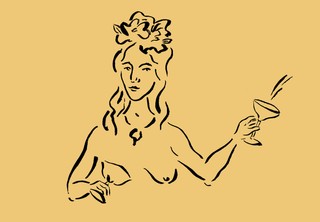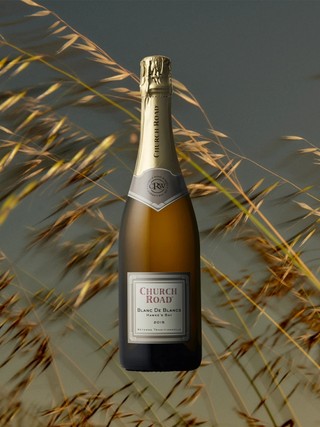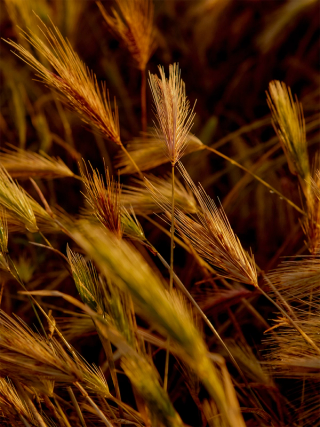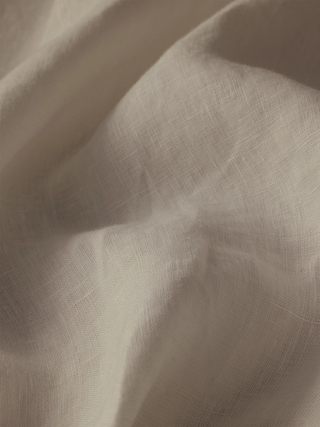VNTNRTM
VNTNRTM
VNTNRTM connects makers drinkers & thinkers in the pleasure of wine

Chronicles of Wine Drinkingby Sophie Otton
Illustration by Melia Tandiono

PART II: Coups and Champagne Coupes
It was in 1735 when Jean-Francois de Troy created the earliest depiction of champagne glasses in his painting Le Déjeuner d’Huitres (The Oyster Luncheon). It shows a lively scene with about fifteen men carousing around a table as oysters and champagne are served. One of the participants has popped the cork on a bottle while the other revellers watch it fly across the canvas, adding to the energy of the scene. The glasses they hold are dainty little coupes, instantly recognisable as modern glassware; crystal clear bowls with a base and a stem by which to hold them.
Champagne back then was not sipped but devoured, so the bubbles were something of an inconvenience. This largely explains the gradual evolution towards the broader shallower saucers that became the fashion. The apocryphal story of them being modelled on Marie Antoinette’s breast adds some zest to the legend of champagne, but there is no doubt the fizz would have dissipated faster in bigger coupes, making it all the more easy to quaff.
Other glasses were also used during the period. A Belgian glassware catalogue from the early 1800s advertises coupes, but also trumpet-shaped glasses with no stem, as well as flutes, which were probably based on the Jacobite glasses formerly used in England. The champagnes they were drinking were sedimentary as the dead yeast remained in the bottle. But it was about this time that Madame Clicquot developed a technique for removing the sediment, and in 1884 the progression to cold disgorging greatly increased the efficiency of the process. Champagne was at last as beautiful to look at as was to drink.
Coupes were still prevalent and remained so into the early 20th Century as champagne began to be celebrated in movies as a metaphor for style and luxury. But as the glitterati became fixated on the beautifully beaded, clear sparkling wine, things began to change. A long thin glass maximised the hypnotic ascent of the bubbles and were less prone to spillage to boot. And so entered the flute coup! And its emphasis on the visual effervescence was extended further still, with the production of flutes with a rough notch or nucleation site at the bottom of the bowl; a singular point of release for the bubbles.
"The apocryphal story of them being modelled on Marie Antoinette’s breast adds some zest to the legend of champagne..."
But there was an indelible problem. Flutes focus so singularly on the look of liquid to the detriment of subtle aromatic throw. In response, champagne producers began using tulip glasses, long and elegant to still watch the beads rise, but broader at the top creating more room for the bouquet to be savoured.
Then came along Phillippe Jamesse, head-sommelier at restaurant Les Crayeres in Reims. He knew that champagne required more space between the surface of the wine and the lip of the glass to contain the notes that ascend to the surface. Coupes were all space, no containment, and flutes were all containment, no space. He approached local glass manufacturer Lehmann Glass with his misgivings, and together they re-shaped the glass. The result was goblet-like, with a higher, rounder bowl curling inwards towards the top.
Introduced to the restaurant in 2008, the Jamesse glass had immediate impact (read: the Jamesse coup!) and was considered far superior to both the coupe and the flute for appreciating the subtleties of champagne. That said, it is perhaps telling that before its invention, Jamesse said he always used white wine glasses to drink champagne at home and, in fact, a swathe of sources confirm this is still true. A number of producers also use white wine glasses for tasting champagne, and some even use pinot noir glasses for richer vintages or rosé. Physicist and champagne-bubble expert Helen Czerski even recommends ‘something about the shape of a brandy glass’, with its amplified capacity above the liquid for the bubbles to do their magic.
With coupes recently returning to vogue through nostalgic programming and widespread-ish vintage aesthetics, and flutes persevering by popular demand in clubs and bars, it’s all a bit of hot air - or cold bubbles - because your champagne will nonetheless taste better in a normal wineglass, or a Jamesse-style glass. Above all, the energy of a cork flying across the canvas of life will invariably enchant, thank goodness.







